
If you don’t have a pricing strategy you’re in trouble. Why? Because your top competitors probably have a brilliant price strategy.
Time to catch up.
Here’s the thing: If you price your offers too high, you won’t land as many sales. And if you price them too low, you’ll make less money than you could.
To succeed, you gotta find that sweet spot — and this process starts by selecting the right pricing strategy.
But what are pricing strategies exactly, and how do they work? There are so many pricing models to choose from, too — which one is best for your business?
Whether you’re a seasoned entrepreneur or a budding bootstrapper, this guide will teach you about the most popular pricing strategies and how to use them.
Let’s get started.

Don’t wait for someone else to do it. Hire yourself and start calling the shots.
What Are Pricing Strategies?
A pricing strategy is a method used to identify the optimum price for a product or service. Pricing strategies are designed to maximize both sales and profits.
15 Types of Pricing Strategies
There are many different types of pricing strategies — each with its advantages and disadvantages. Here are 15 types of pricing strategies that we’re going to explore in this article:
- Cost-plus pricing
- Competitive pricing
- Psychological pricing
- Premium pricing
- Bundle pricing
- Freemium pricing
- Hourly pricing
- Project-based pricing
- Value-based pricing
- Dynamic pricing
- Penetration pricing
- High-low pricing
- Skimming pricing
- Loss leader pricing
- Geographic pricing
The type of pricing strategy that you use will depend on a few factors. Let’s take a closer look at each one so you can understand the differences.
1. Cost-Plus Pricing Strategy
A cost-plus pricing strategy is one of the most straightforward ways to price your offers.
Here’s how it works: First, you would determine the total cost of producing and selling your product or service — also known as the cost of goods sold (COGS). This includes product sourcing, packaging, shipping, storage, marketing, overheads, and any other cost required to produce and sell the product or service.
Once you’ve determined the COGS, you would apply a fixed percentage to make a profit. This is why the cost-plus pricing model is often referred to as ‘markup pricing.’
The cost-plus pricing strategy is mostly used by retailers selling many physical products. It usually doesn’t work very well for more complex products or services, such as software or consulting services.
2. Competitive Pricing Strategy
Competitive pricing — also known as competition-based pricing — follows the going market rate for a product or service.
When using this pricing strategy, you would research the prices offered by your closest competitors and price your offers similarly. You could price your products the same, or slightly higher or lower than your competitors.
This pricing model works best in a saturated niche where consumers may choose one similar offer over another because of a slightly lower price. Just be careful not to join a ‘race to the bottom’ — this is when businesses keep undercutting each other in an attempt to win more business but inadvertently drive down profits for everyone.
This pricing strategy also works well when you’re able to price your product or service similar to competitors, in addition to offering extra features, perks, or benefits that your competitors don’t offer.
For example, Shopify’s pricing is very similar to its competitors’ pricing, but the platform provides many more features for the same price.
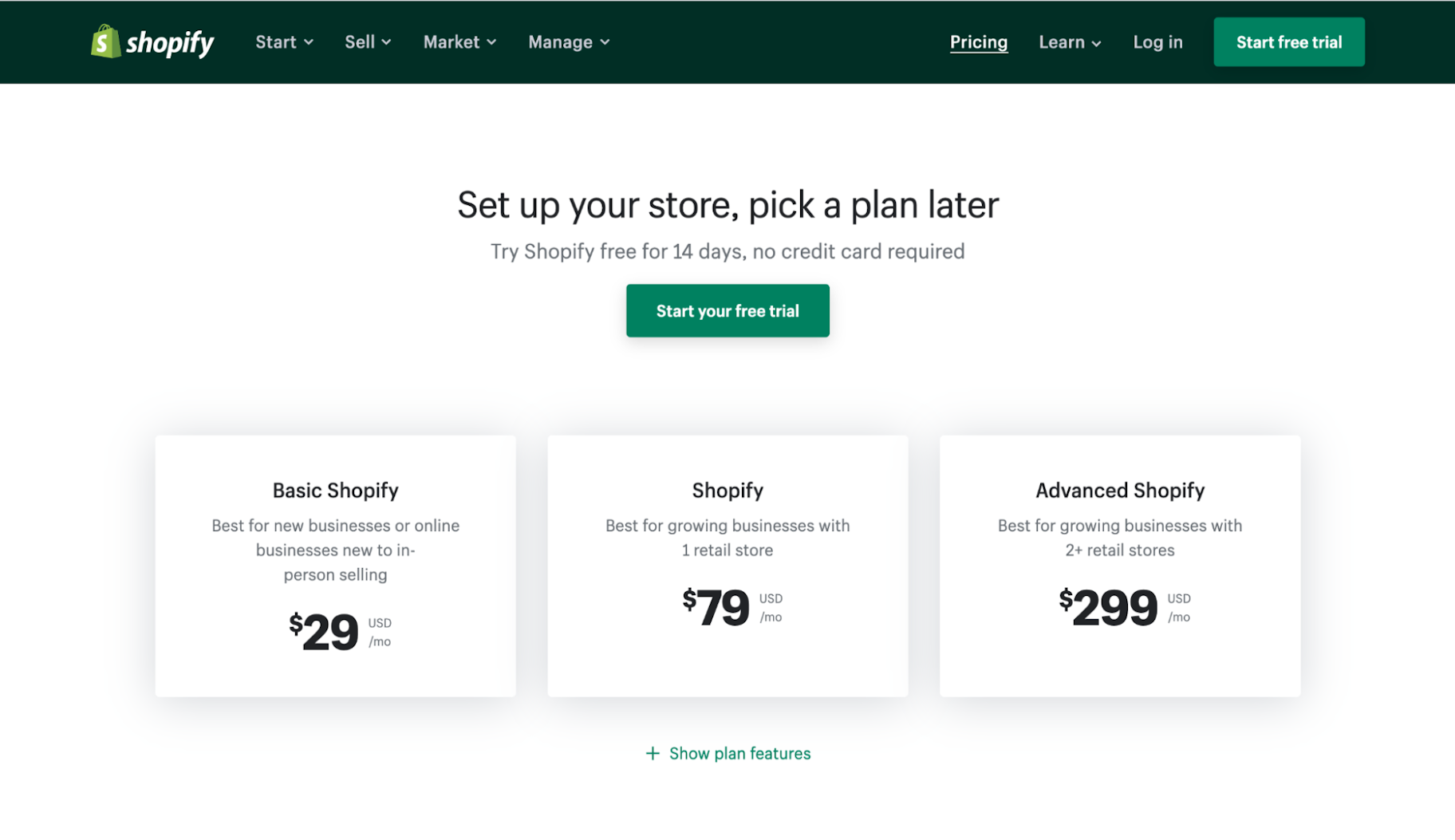
3. Psychological Pricing Strategy
If you’ve ever walked into a discount store, you’ve experienced psychological pricing firsthand.
This pricing strategy is all about using human psychology principles to increase sales. A common tactic is ‘charm pricing’ — when a price ends in 9, 99, or 95 to make it feel cheaper than it is. This works because when people read from left to right, the number appears smaller.
Another psychological pricing tactic is called price anchoring. It works by anchoring the price high and then offering a lower price to make the price seem like a good deal. For example, “$100 NOW $75.”
If people in your target market are attracted to sales and discounts, this pricing strategy may be a good bet. However, tactics like these don’t work well when your target market is primarily concerned with quality and/or prestige.
4. Premium Pricing Strategy
A premium pricing strategy is exactly what it sounds like. The idea is to set a high price to increase the perceived value of a product or service. It’s also known as prestige or luxury pricing.
Unsurprisingly, premium pricing is most often used by luxury brands in the fashion and hospitality industries. For example, the watch brand Rolex uses a premium pricing model.
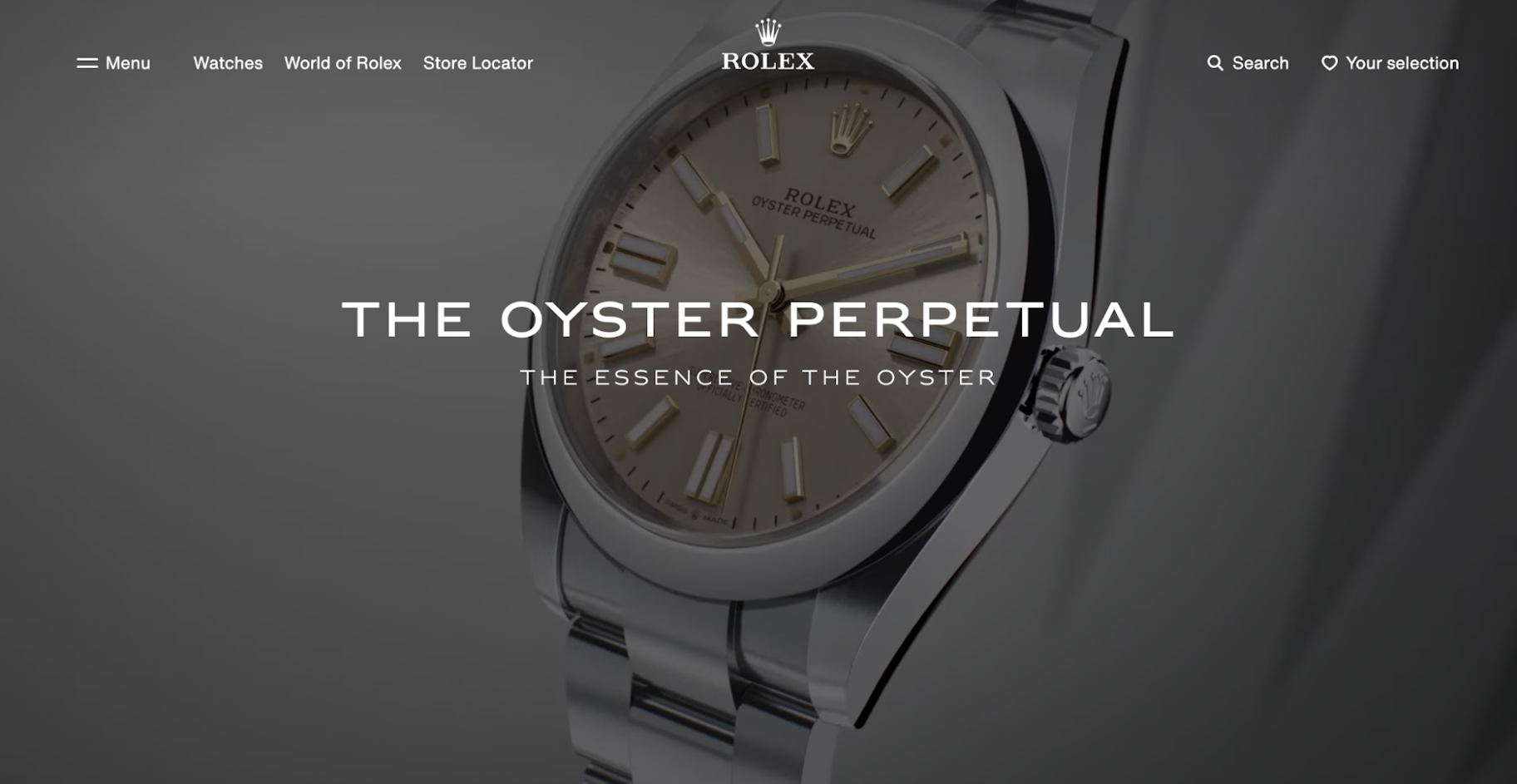
Most brands using this pricing strategy will set a price that’s far higher than the COGS.
5. Bundle Pricing Strategy
Whenever you offer two or more products for a single price, you’re using a bundle pricing model. A classic bundle pricing strategy example is when fast-food chains like McDonald's offer meal deals.
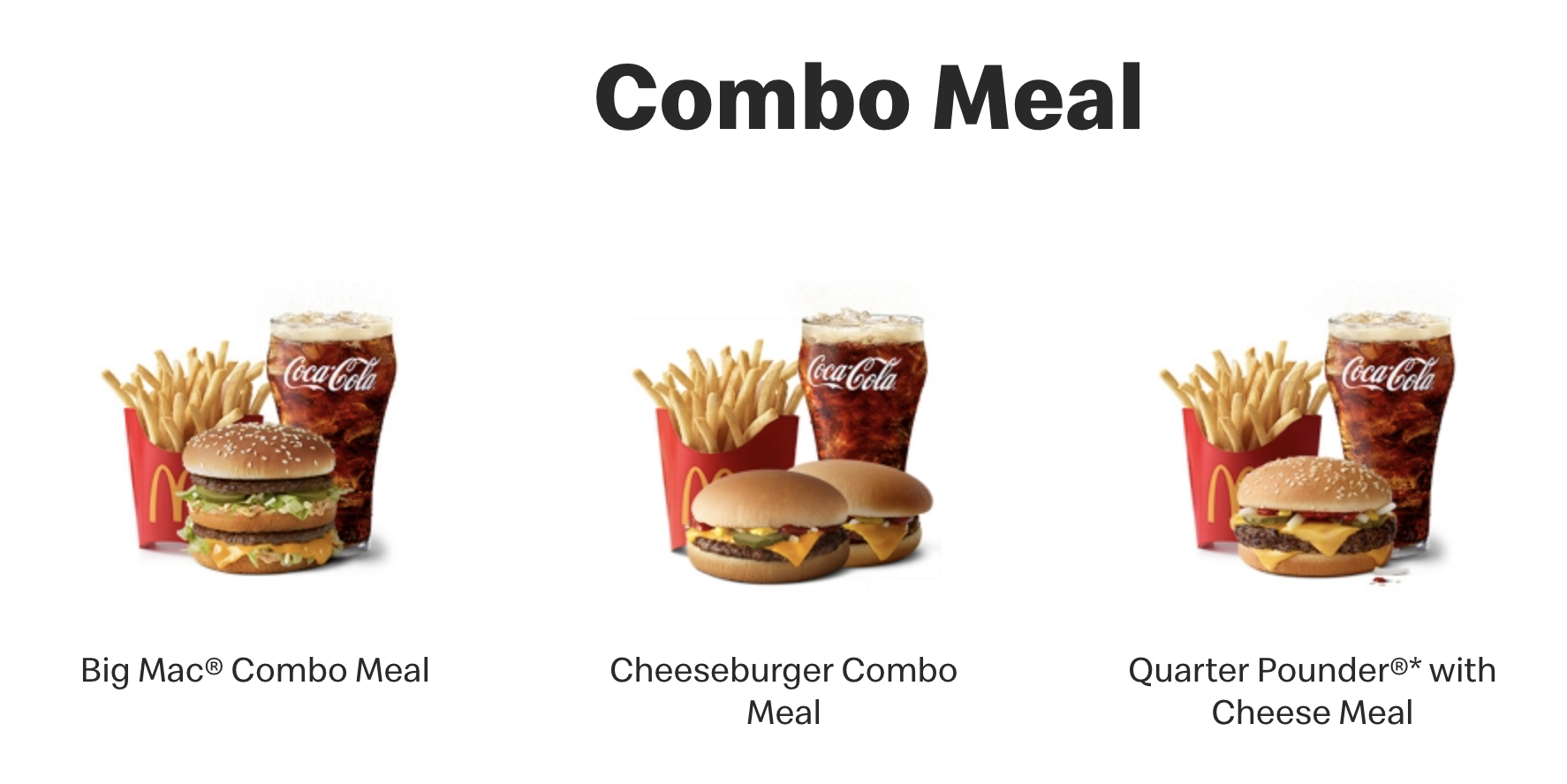
This strategy can help you to increase your average order value (AOV) by cross-selling and upselling complementary products.
6. Freemium Pricing Strategy
Freemium pricing is when businesses provide a basic version of their core offering for free to encourage people to use the product or service. The company will then work to upsell users to a paid premium version of the product or service that provides more value.
This pricing strategy is mostly used by software-as-a-service (SaaS) businesses that offer free plans with limited features, allowing users to experience the software before committing.
The key to this pricing strategy is to make your freemium offer genuinely valuable — this is exactly what we do here at Oberlo with our free Shopify dropshipping app.
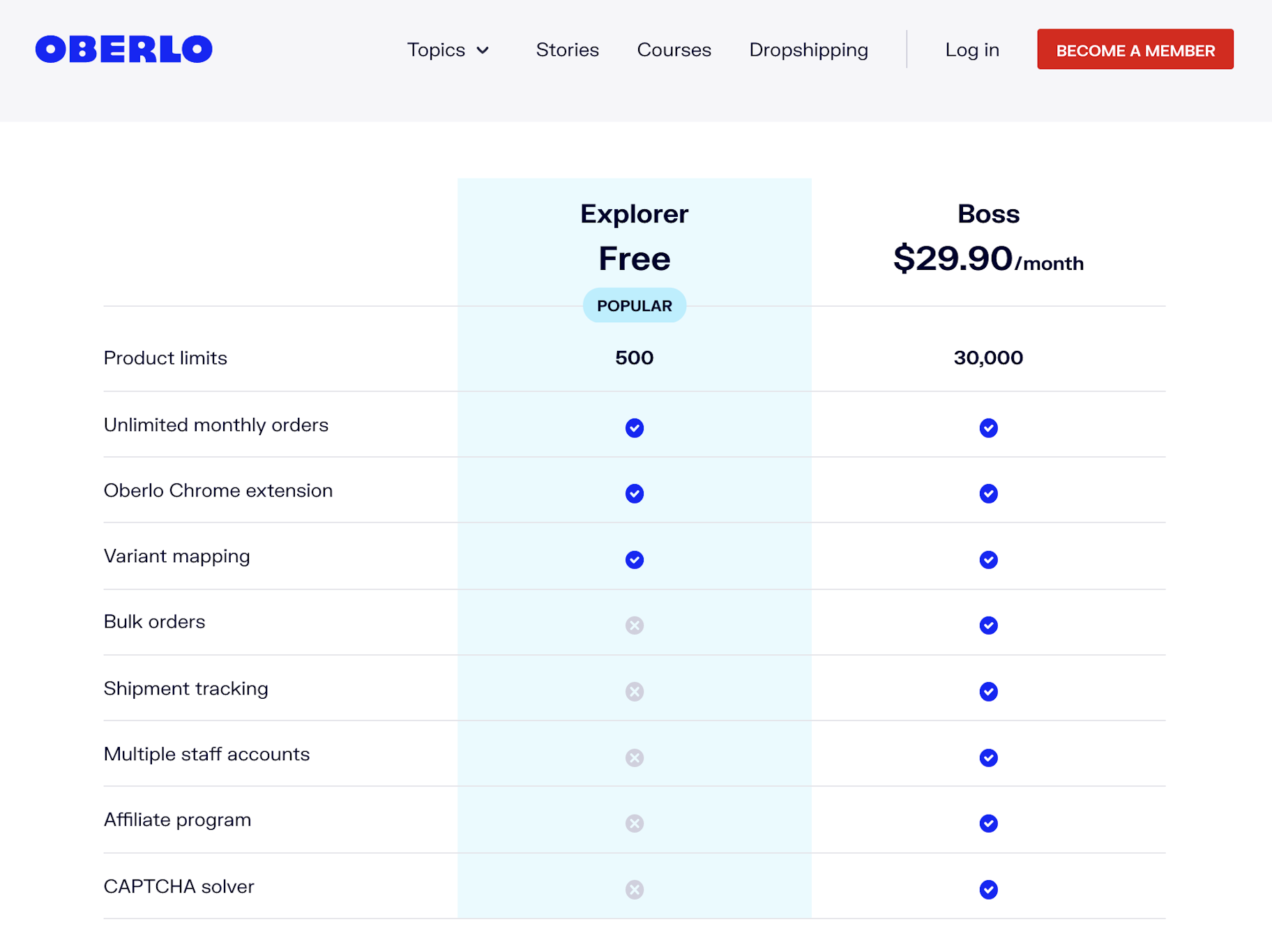
7. Hourly Pricing Strategy
Hourly pricing is as simple as it gets — all you need to do is set an hourly rate and charge for the hours worked. This pricing strategy is most often used by freelancers, consultants, and other service-based businesses.
Depending on the situation, some clients may feel that paying for hours worked rewards inefficiency. However, if you provide a quick, repeatable service, this pricing model can attract clients who would rather avoid committing to a large project-based fee.
8. Project-Based Pricing Strategy
Project-based pricing is another strategy most often used by service-based businesses. Instead of charging for the hours worked, the business will set a flat fee for the project upfront. This allows clients to know the total cost of the project before work begins — and consequently, feel comfortable in the knowledge that the job will be completed within their budget.
You may want to combine this pricing strategy with another. For example, you could combine project-based pricing with cost-plus pricing. In this instance, you would work out your COGS, add a markup, and charge per project.
9. Value-Based Pricing Strategy
Value-based pricing is simple in principle, but challenging in practice.
All you have to do is set your prices based on what your customers are willing to pay. However, to do this, you need to thoroughly understand your target market and your competitors’ pricing.
This pricing model can work well for services that provide a disproportionate level of value compared to the COGS.
For example, although it may only take a copywriter one week to write a sales page for a client, the sales page could make the client hundreds of thousands of dollars. If the copywriter were able to prove this value upfront, it would be reasonable for them to charge thousands — or even tens of thousands — of dollars for the sales page.
10. Dynamic Pricing Strategy
Dynamic pricing — also known as demand pricing or surge pricing — fluctuates with market demand.
Hotels, events, and airlines often use dynamic pricing, which is why the cost of a flight will change depending on the date.
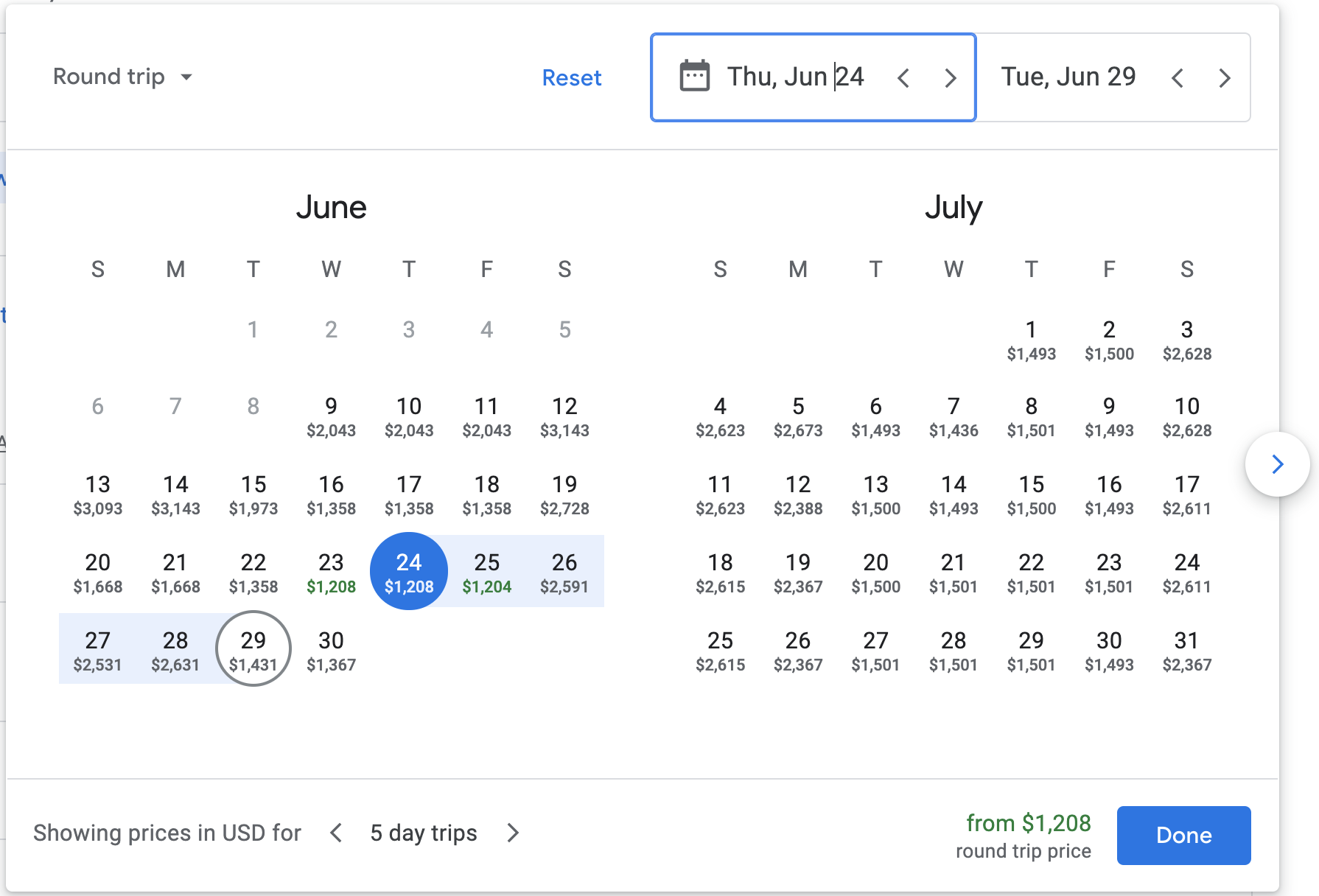
Dynamic pricing like this isn’t the most straightforward strategy, as it requires complex algorithms to be managed effectively.
However, small businesses can use dynamic pricing in a simpler way by charging more for in-season products or during special events. For example, a florist could charge more for flowers during the week leading up to valentine's day.
11. Penetration Pricing Strategy
Penetration pricing is most often used by large companies that have the resources to break even or even lose money for a period. Consequently, they can offer very low prices to attract customers — and poach customers from competitors.
Over time — once the company is established in the market — the company will gradually raise the price to make a healthy profit.
Netflix used this new product pricing strategy when it entered the market at just $7.99. The company now offers three plans that cost $9, $14, and $18.
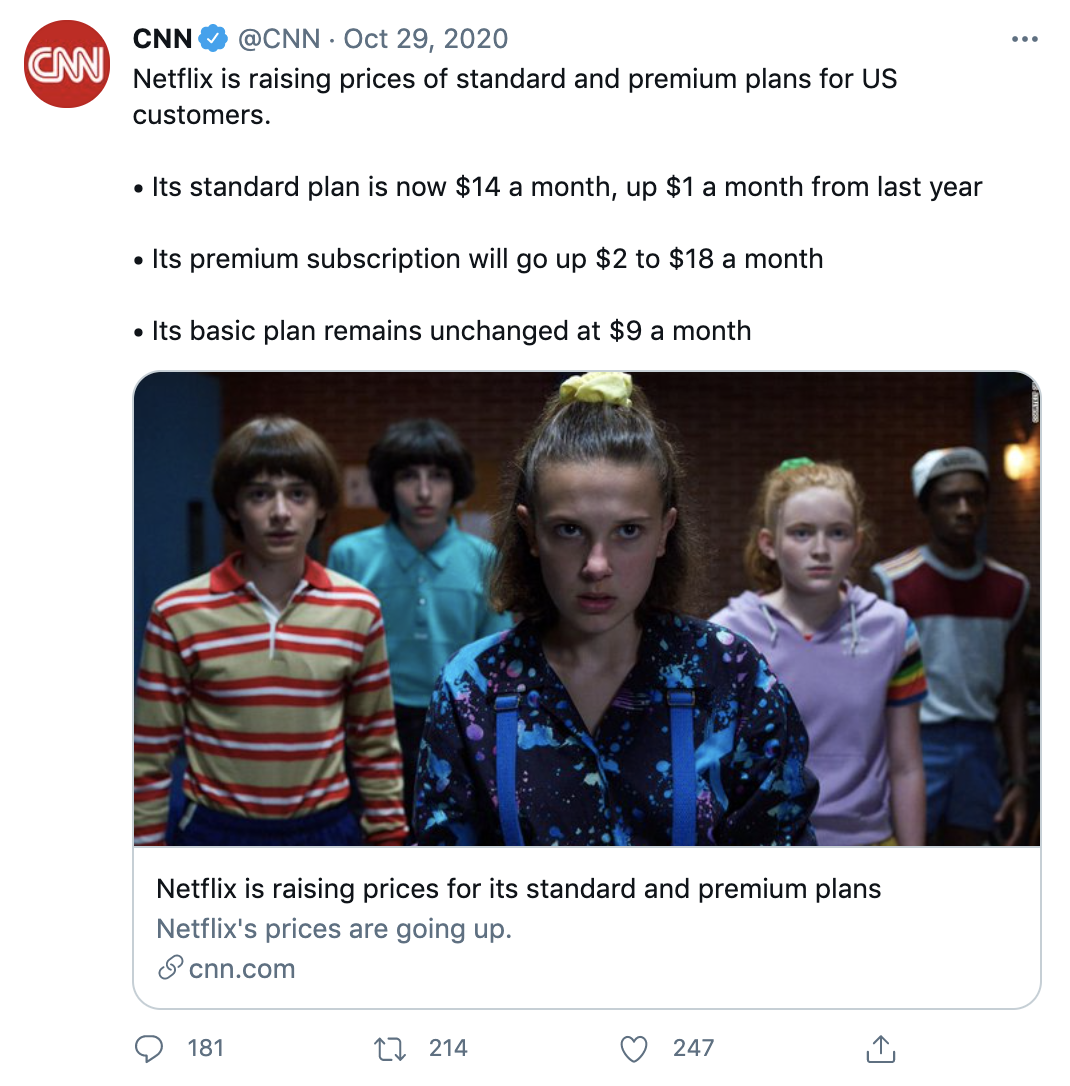
12. High-Low Pricing Strategy
A high-low pricing strategy is the opposite of a penetration strategy. Instead of starting with a low price and increasing it over time, businesses sell products for a high price initially and then lower the price as the product loses market demand, relevance, or novelty.
Whenever you see a store with a large discount section, you’re witnessing the high-low pricing strategy in action.
This pricing strategy is mostly used by retailers with seasonal products, such as fashion and outdoors stores.
You can use high-low pricing to maintain sales as consumer demand waxes and wanes. For example, you can sell winter clothing at full price in the winter and then discount it in the spring to keep sales flowing until the summer season hits.
13. Skimming Pricing Strategy
Skimming pricing is when businesses charge the highest price they can for a new product and then gradually lower the price over time as the product becomes less popular.
This pricing model differs from high-low pricing because the aim is to lower prices as slowly as possible over a long period of time to maximize profits.
Technology companies often employ this strategy for products like smartphones, computers, and video game consoles.
14. Loss Leader Pricing Strategy
Loss leader pricing is when businesses sell many products for a very low price — sometimes below the COGS — to attract customers. These businesses will then make money from selling other products at higher costs.
This strategy is used mostly by supermarkets, big box stores, and discount stores.
Arguably, loss leader pricing isn’t as effective as it used to be thanks to smartphones. According to PYMNTS, 43.3% of shoppers compare prices online while in-store.
15. Geographic Pricing Strategy
Geographic pricing is when businesses price products or services differently depending on where they’re sold.
This pricing strategy takes into account many different variables. For instance, rural locations typically have a slower economy and lower average wages than big cities do. This is why supermarkets often sell the same products for less money in rural locations and more money in larger cities.
You may want to consider incorporating a geographical pricing strategy if you sell products in more than one country.
Final Thoughts: Get Strategic With Your Pricing
Pricing strategies are used to determine the optimal price for a product or service to increase sales and profit.
Selecting a pricing strategy can feel overwhelming at first. So, start by calculating your COGS. Then, if you’re struggling to decide which pricing model to go with, consider using whichever pricing strategy is most popular for your type of product, service, or industry.
Also, don’t forget that you can combine multiple strategies together to create the perfect pricing for your offer. For example, you may want to combine cost-plus pricing with psychological pricing. Or perhaps you’d like to use project-based pricing and bundle pricing together.
Ultimately, the best pricing strategies in the world are still educated guesses. So, make sure to test different prices to find out what works best for your product or service.
Want to Learn More?
- The Secret to Pricing Your Products in Ecommerce
- How To Start Charging 10x More For Your Services
- How to Start a Shopify Store: The Ultimate Guide for 2021
- 9 Marketing Strategies That'll Level Up Your Ecommerce Store
